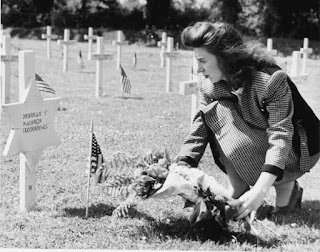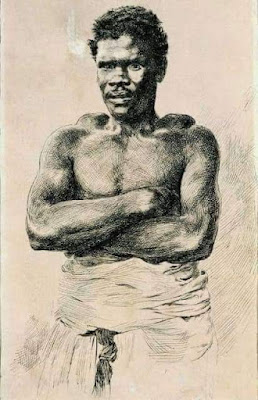Hundreds of dead bodies of Allied soldiers were scattered across the fields of Normandy.
By the end of 6 June 1944, D-day, hundreds of dead bodies of Allied soldiers were scattered across the fields of Normandy.
VII corps issued an order to create a temporary military cemetery at Sainte Mere Eglise, about 200 meters from the church square. A collection point near the small village provided burials for at least two hundred men per day. A total of 3195 soldiers would be buried a 'Sainte-Mere-Eglise cemetery №1' .
Soon after the order for cemetery №1, another burial ground on the road toward Chef-du-Pont was opened: Sainte-Mere-Eglise Cemetery № 2. A total of 4788 soldiers would be buried here including General Theodore Roosevelt Jr, son of former US president Theodore Roosevelt.
At Blosville, 3 km to the south of Sainte Mere Eglise, approximately 500 bodies had been buried in the first days after D-day with the help of local farmers. This site would become Cemetery № 3. In total, 5804 soldiers, including some Germans, would be buried here.
Most of the KIAs of the 82nd Airborne Division in Normandy were initially buried in these three temporary cemeteries. In 1948 the three cemeteries were liquidated and the remains of about 9300 US soldiers were repatriated to the United States at the request of their families while the remaining soldiers were reburied in two permanent American cemeteries at Colleville-Sur-Mer and Saint-James.
𝘐𝘧 𝘦𝘷𝘦𝘳 𝘱𝘳𝘰𝘰𝘧 𝘸𝘦𝘳𝘦 𝘯𝘦𝘦𝘥𝘦𝘥 𝘵𝘩𝘢𝘵 𝘸𝘦 𝘧𝘰𝘶𝘨𝘩𝘵 𝘧𝘰𝘳 𝘢 𝘤𝘢𝘶𝘴𝘦 𝘢𝘯𝘥 𝘯𝘰𝘵 𝘧𝘰𝘳 𝘤𝘰𝘯𝘲𝘶𝘦𝘴𝘵, 𝘪𝘵 𝘤𝘰𝘶𝘭𝘥 𝘣𝘦 𝘧𝘰𝘶𝘯𝘥 𝘪𝘯 𝘵𝘩𝘦𝘴𝘦 𝘤𝘦𝘮𝘦𝘵𝘦𝘳𝘪𝘦𝘴. 𝘏𝘦𝘳𝘦 𝘸𝘢𝘴 𝘰𝘶𝘳 𝘰𝘯𝘭𝘺 𝘤𝘰𝘯𝘲𝘶𝘦𝘴𝘵: 𝘢𝘭𝘭 𝘸𝘦 𝘢𝘴𝘬𝘦𝘥 … 𝘸𝘢𝘴 𝘦𝘯𝘰𝘶𝘨𝘩 … 𝘴𝘰𝘪𝘭 𝘪𝘯 𝘸𝘩𝘪𝘤𝘩 𝘵𝘰 𝘣𝘶𝘳𝘺 𝘰𝘶𝘳 𝘨𝘢𝘭𝘭𝘢𝘯𝘵 𝘥𝘦𝘢𝘥.
𝘎𝘦𝘯𝘦𝘳𝘢𝘭 M𝘢𝘳𝘬 W. 𝘊𝘭𝘢𝘳𝘬
Today is MemorialDay, let us remember all who gave their lives for freedom.









Comments
Post a Comment